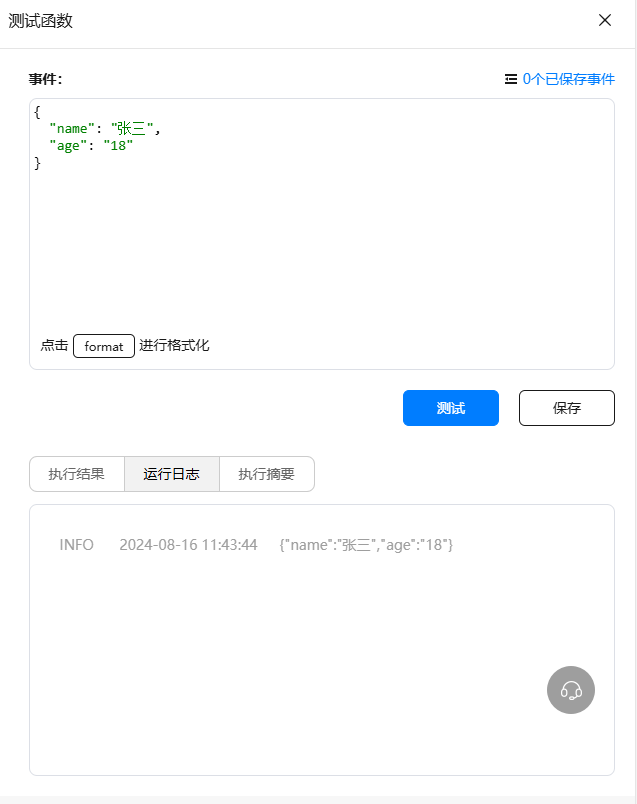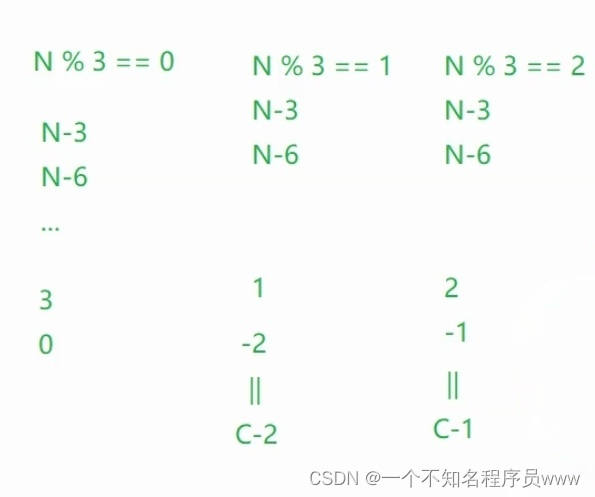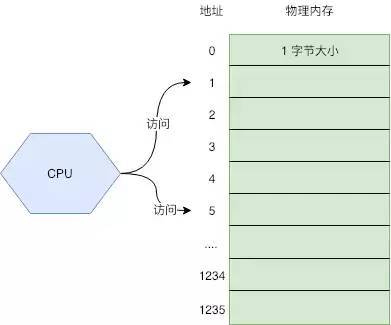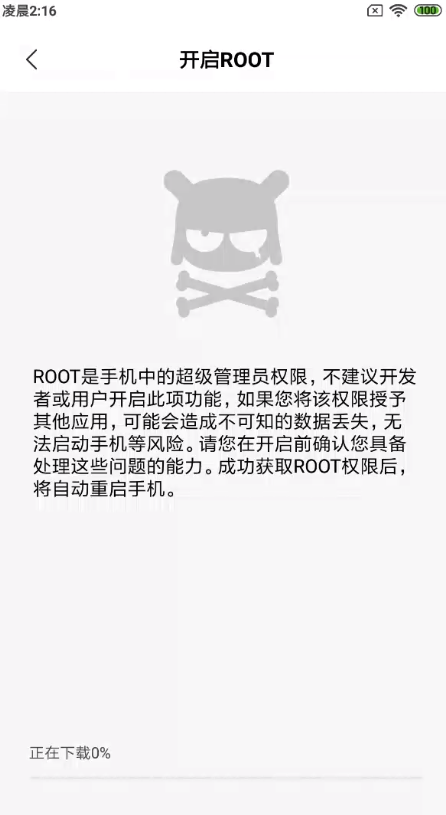
欢迎诸位来阅读在下的博文~
在这里,在下会不定期发表一些浅薄的知识和经验,望诸位能与在下多多交流,共同努力!
江山如画,客心如若,欢迎到访,一展风采
文章目录
- 参考环境
- 参考书籍
- 一、HTTP的工作原理
- 1. 建立连接
- 2. 发送请求
- 3. 服务器处理请求
- 4. 发送响应
- 5. 断开连接
- 6. 客户端处理响应
- 二、客户端请求的消息结构
- 三、服务器响应的消息结构
- 四、HTTP状态码
- 五、从零开始搭建HTTP服务器
- 编译运行
参考环境
- VMware Workstation Pro
- Ubuntu20.04(运行服务器)
参考书籍
《Linux C/C++ 服务器开发实践》——朱文伟 李建英
一、HTTP的工作原理
HTTP(HyperText Transfer Protocol,超文本传输协议)是互联网上应用最广泛的协议之一,它定义了客户端(通常是浏览器)和服务器之间交换数据的规则。浏览器作为HTTP客户端通过URL向HTTP服务器端,即Web服务器发送所有请求。常见的Web服务器有:Apache服务器、IIS服务器等。
其模型如下:

以下是 HTTP 的工作原理的简化概述:
1. 建立连接
- 客户端发起请求:用户通过浏览器或其他客户端软件输入 URL 或点击链接,客户端软件解析 URL 并向服务器发起连接请求。
- DNS解析:客户端首先通过 DNS(Domain Name System)将域名解析为服务器的 IP 地址。
- TCP连接:客户端通过 TCP(Transmission Control Protocol)与服务器建立连接。HTTP 通常使用 TCP 的 80 端口,但是也可以改为8080或者其他端口。
2. 发送请求
- 请求行:客户端发送一个 HTTP 请求,通常包括请求方法(如 GET、POST)、请求的 URL 和 HTTP 版本(如 HTTP/1.1 或 HTTP/2)。
- 请求头:请求还包括一系列的请求头,如
Host(指定服务器的主机名)、User-Agent(标识客户端类型)、Accept(指定客户端可接受的响应类型)等。 - 请求体(可选):如果请求方法(如 POST)需要发送数据,请求体将包含这些数据。
3. 服务器处理请求
- 服务器接收请求:服务器接收到请求后,根据请求方法、URL 和其他信息处理请求。
- 资源定位:服务器确定请求的资源位置,这可能是静态文件或需要动态生成的数据。
- 处理请求:如果是动态请求,服务器可能需要执行数据库查询、业务逻辑处理等。
4. 发送响应
- 状态行:服务器发送一个 HTTP 响应,包括 HTTP 版本、状态码(如 200 表示成功)和状态短语(如 “OK”)。
- 响应头:响应还包括一系列的响应头,如
Content-Type(指定响应内容的类型)、Content-Length(指定响应内容的长度)等。 - 响应体:这是服务器返回给客户端的实际数据,可以是 HTML 页面、图片、视频等。
5. 断开连接
- 关闭连接:一旦响应被客户端接收,TCP 连接通常会被关闭。对于 HTTP/1.1,如果请求头中包含
Connection: keep-alive,则连接可能会被保持打开状态,以便后续请求重用。
6. 客户端处理响应
- 解析响应:客户端软件解析响应内容,并根据内容类型进行相应的处理(如渲染 HTML 页面、显示图片等)。
HTTP 是无状态的,这意味着每个请求都是独立的,服务器不会保存关于客户端的任何信息(除非使用 cookie 或其他机制)。这使得 HTTP 适用于简单的请求-响应模型,但也有一些局限性,比如在需要维护会话状态的应用中。
二、客户端请求的消息结构
客户端发送一个HTTP请求到服务器,改请求消息由请求行(状态行)、请求头部(首部行)、空行和请求数据(实体)四个部分组成,如图所示

注:sp 指空格,cr指回车符,lf指换行符
HTTP协议定义了8种请求方法,来表明对Request-URI指定资源的不同操作方式,具体如下:
- GET:请求获取由Request-URI标识的资源。它通常用于请求服务器发送一个文件或数据。
- POST:用于向服务器提交数据,通常用于提交表单数据或上传文件。POST请求可能会导致服务器上的状态改变或副作用。
- PUT:用于将请求中的数据存储在服务器上。它通常用于更新资源,但如果资源不存在,可能会创建一个新的资源。
- DELETE:请求服务器删除由Request-URI标识的资源。
- HEAD:与GET方法类似,但服务器在响应中只返回头部信息,不返回实体主体(即不返回实际内容)。
- OPTIONS:用于获取服务器支持的HTTP请求方法和其他选项信息。
- TRACE:用于沿着到目标资源的路径执行消息回环测试,主要用于诊断和调试。
- CONNECT:用于建立一个隧道,将连接转换为透明的TCP/IP通道,通常用于SSL加密的连接。
以下是这些方法的归纳:
- GET:检索数据。
- POST:提交数据。
- PUT:更新或创建数据。
- DELETE:删除数据。
- HEAD:检查数据的存在性或状态。
- OPTIONS:查询服务器能力。
- TRACE:跟踪请求链。
- CONNECT:建立隧道。
虽然HTTP的请求方式有8种,但是在实践中常用到的是GET和POST,其他方法可以通过这两种基本方式间接实现。
三、服务器响应的消息结构
HTTP响应由四个部分组成,分别是:状态行、消息报头(响应头)、空行和响应正文,如图:


四、HTTP状态码
当浏览者访问一个网页时,浏览器会向网页所在服务器发出请求。在浏览器接收并显示网页前,此网页所在的服务器会返回一个包含HTTP状态码的信息头用以响应浏览器的请求。
HTTP状态码的英文时HTTP Status Code。下面时常见的HTTP状态码:
200 - 请求成功
301 - 资源(网页等)被永久转移到其它URL
404 - 请求的资源(网页等)不存在
500 - 内部服务器错误
| 类型 | 描述 |
|---|---|
| 1** | 信息,服务器收到请求,需要请求者继续执行操作 |
| 2** | 成功,操作被成功接收并处理 |
| 3** | 重定向,需要进一步的操作以完成请求 |
| 4** | 客户端错误,请求包含语法错误或无法完成请求 |
| 5** | 服务器错误,服务器在处理请求的过程中发生了错误 |
五、从零开始搭建HTTP服务器
现在有很多现成开源的HTTP服务器,比如非常流行的Apache,诸位若想详细了解,可以浏览下面博客一二:
在linux上架设Web服务器Apache(Ubuntu)
Linux系统的Apache2如何启动cgi模块(Ubuntu)
但是,我今天打算自己手动搭建一个,诸位若有兴趣,也可以一起来吧~
main.c
#include "httpserver.h"
int main(void)
{
int server_sock = -1;
u_short port = 8888;
int client_sock = -1;
struct sockaddr_in client_name;
socklen_t client_name_len = sizeof(client_name);
pthread_t newthread;
server_sock = startup(&port);
printf("httpd running on port %d\n", port);
while (1)
{
client_sock = accept(server_sock,
(struct sockaddr *)&client_name,
&client_name_len);
if (client_sock == -1)
error_die("accept");
/* accept_request(client_sock); */
if (pthread_create(&newthread , NULL, (void*(*)(void*))accept_request, (void*)(intptr_t)client_sock) != 0)
perror("pthread_create");
}
close(server_sock);
return(0);
}
httpserver.h
#ifndef _HTTPSERVER_H_
#define _HTTPSERVER_H_
#include "myhead.h"
#define ISspace(x) isspace((int) (x))
#define SERVER_STRING "Server: jdbhttpd/0.1.0\r\n"
//处理从套接字上监听到的一个HTTP请求,此函数很大部分体现服务器处理请求流程
void accept_request(void*);
//返回给客户端这是一个错误请求
void bad_request(int);
//读取服务器上某个文件,写道套接字中
void cat(int, FILE *);
//处理发生在执行cgi程序事出现的错误
void cannot_execute(int);
//打印错误信息,并退出
void error_die(const char *);
//运行cgi程序的处理,是主要的函数
void execute_cgi(int, const char *, const char *, const char *);
//读取套接字的一行,把回车符换行符等情况都统一为换行符结束
int get_line(int, char *, int);
//把HTTP响应头部写到套接字中
void headers(int, const char *);
//处理找不到请求文件的情况,即发送404
void not_found(int);
//读取文件并返回给客户端,里面调用cat
void serve_file(int, const char *);
//初始化http服务,包括建立套接字、绑定端口、进行监听等。
int startup(u_short *);
//返回浏览器,表明method不支持
void unimplemented(int);
#endif
httpserver.c
#include "myhead.h"
#include "httpserver.h"
int startup(u_short *port)
{
int httpd = 0;
struct sockaddr_in name;
httpd = socket(PF_INET, SOCK_STREAM, 0);
if (httpd == -1)
error_die("socket");
memset(&name, 0, sizeof(name));
name.sin_family = AF_INET;
name.sin_port = htons(*port);
name.sin_addr.s_addr = htonl(INADDR_ANY);
if (bind(httpd, (struct sockaddr *)&name, sizeof(name)) < 0)
error_die("bind");
if (*port == 0) /* if dynamically allocating a port */
{
socklen_t namelen = sizeof(name);
if (getsockname(httpd, (struct sockaddr *)&name, &namelen) == -1)
error_die("getsockname");
*port = ntohs(name.sin_port);
}
if (listen(httpd, 5) < 0)
error_die("listen");
return (httpd);
}
void error_die(const char *sc)
{
perror(sc);
exit(1);
}
void accept_request(void *arg)
{
int client = (intptr_t)arg;
char buf[1024];
int numchars;
char method[255];
char url[255];
char path[512];
size_t i, j;
struct stat st;
int cgi = 0;
char *query_string = NULL;
numchars = get_line(client, buf, sizeof(buf));
i = 0;
j = 0;
while (!ISspace(buf[j]) && (i < sizeof(method) - 1))
{
method[i] = buf[j];
i++;
j++;
}
method[i] = '\0';
//只能识别GET和POST
if (strcasecmp(method, "GET") && strcasecmp(method, "POST"))
{
//返回浏览器,表明格式不符
unimplemented(client);
return;
}
//如果是POST,cgi置为1,即POST的时候开启cgi
if (strcasecmp(method, "POST") == 0)
cgi = 1;
i = 0;
//跳过空格
while (ISspace(buf[j]) && (j < sizeof(buf)))
j++;
//从缓冲区中把URL读取出来
while (!ISspace(buf[j]) && (i < sizeof(url) - 1) && (j < sizeof(buf)))
{
url[i] = buf[j];
i++;
j++;
}
url[i] = '\0';
//处理GET请求
if (strcasecmp(method, "GET") == 0)
{
query_string = url;
//去找GET参数,即?后面部分
while ((*query_string != '?') && (*query_string != '\0'))
query_string++;
//如果找到了的话,说明这个请求也需要调用脚本来处理
//此时就把请求字符串单独抽取出来
//GET方法特点,?后面为参数
if (*query_string == '?')
{
cgi = 1;
*query_string = '\0';
query_string++;
}
}
//保存有效的URL地址并加上请求地址的主页索引,默认目录是在htdocs下
//格式化URL到path数组中
sprintf(path, "/root/htdocs%s", url);
//默认地址,解析到的路径如果是/,则自动加上index.html,代表默认访问该路径下的index.html网页
if (path[strlen(path) - 1] == '/')
strcat(path, "index.html");
//访问请求的文件,如果文件不存在,直接返回并发送404,如果存在,则调用cgi程序处理
//根据路径找到对应文件
if (stat(path, &st) == -1) //获取文件信息
{
while ((numchars > 0) && strcmp("\n", buf)) /* read & discard headers */
numchars = get_line(client, buf, sizeof(buf));
not_found(client);
}
else
{
//如果文件存在但是个目录,则直接拼接index.html
if ((st.st_mode & S_IFMT) == S_IFDIR)
strcat(path, "/index.html");
//判断文件的执行权限
if ((st.st_mode & S_IXUSR) ||
(st.st_mode & S_IXGRP) ||
(st.st_mode & S_IXOTH))
cgi = 1;
//如果不是cgi,直接把服务器文件返回,否则执行cgi
if (!cgi)
serve_file(client, path);
else
execute_cgi(client, path, method, query_string);
}
close(client);
}
int get_line(int sock, char *buf, int size)
{
int i = 0;
char c = '\0';
int n;
while ((i < size - 1) && (c != '\n'))
{
n = recv(sock, &c, 1, 0);
/* DEBUG printf("%02X\n", c); */
if (n > 0)
{
if (c == '\r')
{
//从缓冲区读取一个字符,但是不在缓冲区去除,相当于预览
n = recv(sock, &c, 1, MSG_PEEK);
/* DEBUG printf("%02X\n", c); */
if ((n > 0) && (c == '\n'))
recv(sock, &c, 1, 0);
else
c = '\n';
}
buf[i] = c;
i++;
}
else
c = '\n';
}
buf[i] = '\0';
return (i);
}
void unimplemented(int client)
{
char buf[1024];
sprintf(buf, "HTTP/1.0 501 Method Not Implemented\r\n");
send(client, buf, strlen(buf), 0);
sprintf(buf, SERVER_STRING);
send(client, buf, strlen(buf), 0);
sprintf(buf, "Content-Type: text/html\r\n");
send(client, buf, strlen(buf), 0);
sprintf(buf, "\r\n");
send(client, buf, strlen(buf), 0);
sprintf(buf, "<HTML><HEAD><TITLE>Method Not Implemented\r\n");
send(client, buf, strlen(buf), 0);
sprintf(buf, "</TITLE></HEAD>\r\n");
send(client, buf, strlen(buf), 0);
sprintf(buf, "<BODY><P>HTTP request method not supported.\r\n");
send(client, buf, strlen(buf), 0);
sprintf(buf, "</BODY></HTML>\r\n");
send(client, buf, strlen(buf), 0);
}
void not_found(int client)
{
char buf[1024];
sprintf(buf, "HTTP/1.0 404 NOT FOUND\r\n");
send(client, buf, strlen(buf), 0);
sprintf(buf, SERVER_STRING);
send(client, buf, strlen(buf), 0);
sprintf(buf, "Content-Type: text/html\r\n");
send(client, buf, strlen(buf), 0);
sprintf(buf, "\r\n");
send(client, buf, strlen(buf), 0);
sprintf(buf, "<HTML><TITLE>Not Found</TITLE>\r\n");
send(client, buf, strlen(buf), 0);
sprintf(buf, "<BODY><P>The server could not fulfill\r\n");
send(client, buf, strlen(buf), 0);
sprintf(buf, "your request because the resource specified\r\n");
send(client, buf, strlen(buf), 0);
sprintf(buf, "is unavailable or nonexistent.\r\n");
send(client, buf, strlen(buf), 0);
sprintf(buf, "</BODY></HTML>\r\n");
send(client, buf, strlen(buf), 0);
}
void serve_file(int client, const char *filename)
{
FILE *resource = NULL;
int numchars = 1;
char buf[1024];
buf[0] = 'A';
buf[1] = '\0';
while ((numchars > 0) && strcmp("\n", buf)) /* read & discard headers */
numchars = get_line(client, buf, sizeof(buf));
resource = fopen(filename, "r");
if (resource == NULL)
not_found(client);
else
{
headers(client, filename);
cat(client, resource);
}
fclose(resource);
}
void execute_cgi(int client, const char *path,
const char *method, const char *query_string)
{
char buf[1024];
int cgi_output[2];
int cgi_input[2];
pid_t pid;
int status;
int i;
char c;
int numchars = 1;
int content_length = -1;
buf[0] = 'A';
buf[1] = '\0';
if (strcasecmp(method, "GET") == 0)
while ((numchars > 0) && strcmp("\n", buf)) /* read & discard headers */
numchars = get_line(client, buf, sizeof(buf));
else /* POST */
{
numchars = get_line(client, buf, sizeof(buf));
while ((numchars > 0) && strcmp("\n", buf))
{
buf[15] = '\0';
if (strcasecmp(buf, "Content-Length:") == 0)
content_length = atoi(&(buf[16]));
numchars = get_line(client, buf, sizeof(buf));
}
if (content_length == -1)
{
bad_request(client);
return;
}
}
sprintf(buf, "HTTP/1.0 200 OK\r\n");
send(client, buf, strlen(buf), 0);
//建立无名管道,以帮助父子进程通信
if (pipe(cgi_output) < 0)
{
cannot_execute(client);
return;
}
if (pipe(cgi_input) < 0)
{
cannot_execute(client);
return;
}
// fork后管道都复制一份,都是一样的
//子进程关闭两个无用的端口,避免浪费
// x<---------------------->1 output
// 0<---------------------->x input
//父进程关闭2个无用的端口,避免浪费
// 0<---------------------->x output
// x<---------------------->1 input
//此时父子进程可以通信了
if ((pid = fork()) < 0)
{
cannot_execute(client);
return;
}
if (pid == 0) /* child: CGI script */
{
char meth_env[255];
char query_env[255];
char length_env[255];
dup2(cgi_output[1], 1);//将cgi_putput的写端文件描述符复制到1(即标准输出文件描述符),导致任何写入
//标准输出的操作都会发送到cig_output的写入端
dup2(cgi_input[0], 0); //同理
close(cgi_output[0]);
close(cgi_input[1]);
//设置cgi的环境变量
sprintf(meth_env, "REQUEST_METHOD=%s", method);
putenv(meth_env);
if (strcasecmp(method, "GET") == 0)
{
sprintf(query_env, "QUERY_STRING=%s", query_string);
putenv(query_env);
}
else
{ /* POST */
sprintf(length_env, "CONTENT_LENGTH=%d", content_length);
putenv(length_env);
}
//使用execl执行cgi的脚本
execl(path, path, NULL);
exit(0);
}
else
{ /* parent */
close(cgi_output[1]);
close(cgi_input[0]);
if (strcasecmp(method, "POST") == 0)
for (i = 0; i < content_length; i++)
{
recv(client, &c, 1, 0);
write(cgi_input[1], &c, 1);
}
while (read(cgi_output[0], &c, 1) > 0)
send(client, &c, 1, 0);
close(cgi_output[0]);
close(cgi_input[1]);
waitpid(pid, &status, 0);
}
}
void headers(int client, const char *filename)
{
char buf[1024];
(void)filename; /* could use filename to determine file type */
strcpy(buf, "HTTP/1.0 200 OK\r\n");
send(client, buf, strlen(buf), 0);
strcpy(buf, SERVER_STRING);
send(client, buf, strlen(buf), 0);
sprintf(buf, "Content-Type: text/html\r\n");
send(client, buf, strlen(buf), 0);
strcpy(buf, "\r\n");
send(client, buf, strlen(buf), 0);
}
void cat(int client, FILE *resource)
{
char buf[1024];
fgets(buf, sizeof(buf), resource);
while (!feof(resource))
{
send(client, buf, strlen(buf), 0);
fgets(buf, sizeof(buf), resource);
}
}
void bad_request(int client)
{
char buf[1024];
sprintf(buf, "HTTP/1.0 400 BAD REQUEST\r\n");
send(client, buf, sizeof(buf), 0);
sprintf(buf, "Content-type: text/html\r\n");
send(client, buf, sizeof(buf), 0);
sprintf(buf, "\r\n");
send(client, buf, sizeof(buf), 0);
sprintf(buf, "<P>Your browser sent a bad request, ");
send(client, buf, sizeof(buf), 0);
sprintf(buf, "such as a POST without a Content-Length.\r\n");
send(client, buf, sizeof(buf), 0);
}
void cannot_execute(int client)
{
char buf[1024];
sprintf(buf, "HTTP/1.0 500 Internal Server Error\r\n");
send(client, buf, strlen(buf), 0);
sprintf(buf, "Content-type: text/html\r\n");
send(client, buf, strlen(buf), 0);
sprintf(buf, "\r\n");
send(client, buf, strlen(buf), 0);
sprintf(buf, "<P>Error prohibited CGI execution.\r\n");
send(client, buf, strlen(buf), 0);
}
myhead.h
// myhead.h
#ifndef _MYHEAD_H
#define _MYHEAD_H
#include <stdio.h>
#include <string.h>
#include <stdlib.h>
#include <sys/types.h>
#include <sys/stat.h>
#include <fcntl.h>
#include <unistd.h>
#include <errno.h>
#include <sys/mman.h>
#include <linux/input.h> //跟输入子系统模型有关的头文件
#include <dirent.h>
#include <stdbool.h>
#include <strings.h>
#include <sys/wait.h>
#include <signal.h>
#include <sys/ipc.h>
#include <sys/shm.h>
#include <sys/msg.h>
#include <sys/sem.h>
#include <pthread.h>
#include <semaphore.h>
#include <sys/socket.h>
#include <netinet/in.h>
#include <arpa/inet.h>
#include <net/if.h>
#include <netdb.h>
#include <poll.h>
#include <sys/epoll.h>
#include <ctype.h>
#endif
编译运行
使用:gcc httpserver.c main.c -o main -ipthread 编译出可执行文件
如果成功,可以使用./main运行该服务器程序。
但是,现在还缺少.html文件和.cgi文件。在下已提供一份样例,如下:
index.html
<!DOCTYPE html>
<html>
<head>
<title>Index</title>
</head>
<body>
<p>Welcome to my HTTP webserver.</p>
<h1>Show CGI Result:</h1>
<form action="test.cgi" method="POST">
<input type="submit" value="Submit">
</form>
</body>
</html>
test.cpp(将该文件编译,然后将得到的可执行文件改名成test.cgi即可)
#include <iostream>
using namespace std;
int main()
{
cout << "Content-Type: text/html\n\n"; //注意结尾是两个\n
cout << "<html>\n";
cout << "<head>\n";
cout << "<title>Hello World - First CGI Program</title>\n";
cout << "</head>\n";
cout << "<body bgcolor=\"yellow\">\n";
cout << "<h2> <font color=\"#FF0000\">Hello World! This is my first CGI program</font></h2>\n";
cout << "</body>\n";
cout << "</html>\n";
return 0;
}
获得上面两个文件后,将他们统一放在/root/htdocs/目录下(如果没有该目录,可自行创建),
当然,勿要忘记了更改目录和文件的权限:
sudo chmod +x /root/htdocs
(sudo chmod +x /root/htdocs/index.html)x
注意:不要修改.html的权限,因为在代码中当.html文件只读时,才处理
sudo chmod +x /root/htdocs/test.cgi
如此,运行main可执行文件,然后在主机的浏览器上输入:http://你的ip地址:8888/
结果如下:

点击按钮,会有如下返回:

当然,你也可以直接访问.cgi文件:

至此,结束~

望诸位不忘三连支持一下~



















